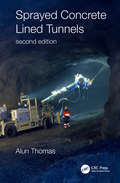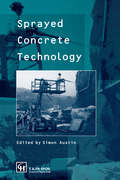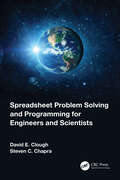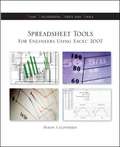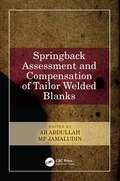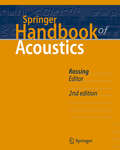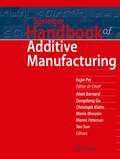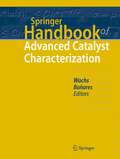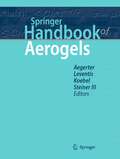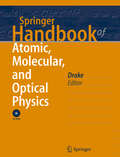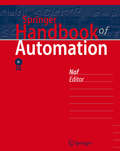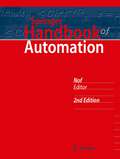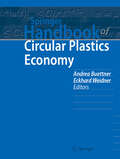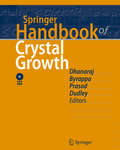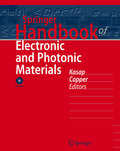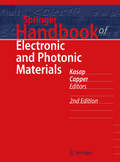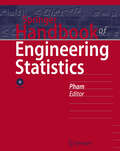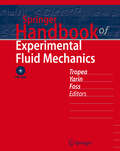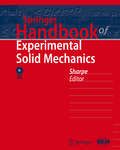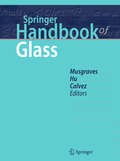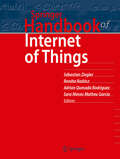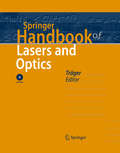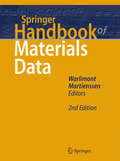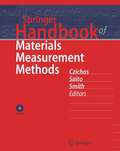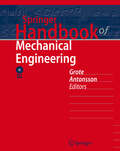- Table View
- List View
Sprayed Concrete Lined Tunnels
by Alun ThomasSprayed concrete lined (SCL) tunnels are growing rapidly in popularity due to their versatility. The design and construction of both hard rock and soft ground tunnels has been revolutionised by the advent of the SCL method and now the use of permanent sprayed concrete linings has unlocked the true potential of the method to minimise construction costs and times. Yet the complex early age behaviour of the sprayed concrete makes the design difficult and requires a robust management system during construction. Consequently the great advantages of the method must be balanced against the risks, as a few high-profile tunnel collapses have illustrated. <p><P>Practising engineers on site, in the design office or in client organizations will find this book an excellent introduction. It covers all aspects of SCL tunnelling – from the constituents of sprayed concrete to detailed design and management during construction. Although there is a close interdependence between all the facets of sprayed concrete, few engineers have the right breadth of experience and expertise to cover all of them. This urgently needs to be transferred to the wider engineering community as SCL tunnels play an increasingly important role in the delivery of the underground infrastructure which modern urban life demands. <P><P>In this second edition, beyond a general updating to reflect new developments, the sections on permanent sprayed concrete, the innovative technology of spray applied waterproofing membranes, fibre reinforcement (both steel and macrosynthetic) and composite lining design have been expanded. Sustainability and environmental impact are addressed in a new section.
Sprayed Concrete Technology
by S. A. AustinThe process of spraying concrete is one of the most versatile concrete placing techniques, and is used in a wide range of applications - from construction of new tunnels, domes, tanks and pools, to repair and strengthening of existing structure. The steady growth in interest and application in the technique is reflected in this book, which brings t
Spreadsheet Problem Solving and Programming for Engineers and Scientists
by David E. Clough Steven C. ChapraSpreadsheet Problem Solving and Programming for Engineers and Scientists provides a comprehensive resource essential to a full understanding of modern spreadsheet skills needed for engineering and scientific computations. Beginning with the basics of spreadsheets and programming, this book builds on the authors’ decades of experience teaching spreadsheets and programming to both university students and professional engineers and scientists. Following on from this, it covers engineering economics, key numerical methods, and applied statistics. Finally, this book details the Visual Basic for Applications (VBA) programming system that accompanies Excel. With each chapter including examples and a set of exercises, this book is an ideal companion for all engineering courses and also for self-study. Based on the latest version of Excel (Microsoft Excel for Microsoft 365), it is also compatible with earlier versions of Excel dating back to Version 2013. Including numerous case studies, this book will be of interest to students and professionals working in all areas of engineering and science.
Spreadsheet Tools for Engineers Using Excel 2007
by Byron S. GottfriedThis practical text is a perfect fit for introductory engineering courses by successfully combining an introduction to Excel fundamentals with a clear presentation on how Excel can be used to solve common engineering problems. Updated to ensure compatibility with Excel 2007,Spreadsheet Tools for Engineers Using Excel 2007provides beginning engineering students with a strong foundation in problem solving using Excel as the modern day equivalent of the slide rule. As part of McGraw-Hill's BEST series for freshman engineering curricula, this text is particularly geared toward introductory students. The author provides plenty of background information on technical terms, and provides numerous examples illustrating both traditional and spreadsheet solutions for a variety of engineering problems. The first three chapters introduce the basics of problem solving and Excel fundamentals. Beyond that, the chapters are largely independent of one another. Topics covered include graphing data, unit conversions, data analysis, interpolation and curve fitting, solving equations, evaluating integrals, creating macros, and comparing economic alternatives.
Springback Assessment and Compensation of Tailor Welded Blanks
by Ab Abdullah Mf JamaludinFocusing on techniques developed to evaluate the forming behaviour of tailor welded blanks (TWBs) in sheet metal manufacturing, this edited collection details compensation methods suited to mitigating the effects of springback. Making use of case studies and in-depth accounts of industry experience, this book gives a comprehensive overview of springback and provides essential solutions necessary to modern-day automotive engineers. Sheet metal forming is a major process within the automotive industry, with advancement of the technology including utilization of non-uniform sheet metal in order to produce light or strengthened body structures. This is critical in the reduction of vehicle weight in order to match increased consumer demand for better driving performance and improved fuel efficiency. Additionally, increasingly stringent international regulations regarding exhaust emissions require manufacturers to seek to lighten vehicles as much as possible. To aid engineers in optimizing lightweight designs, this comprehensive book covers topics by a variety of industry experts, including compensation by annealing, low-power welding, punch profile radius and tool-integrated springback measuring systems. It ends by looking at the future trends within the industry and the potential for further innovation within the field. This work will benefit car manufacturers and stamping plants that face springback issues within their production, particularly in the implementation of TWB production into existing facilities. It will also be of interest to students and researchers in automotive and aerospace engineering.
Springer Handbook of Acoustics
by Thomas D. RossingThis is an unparalleled modern handbook reflecting the richly interdisciplinary nature of acoustics edited by an acknowledged master in the field. The handbook reviews the most important areas of the subject, with emphasis on current research. The authors of the various chapters are all experts in their fields. Each chapter is richly illustrated with figures and tables. The latest research and applications are incorporated throughout, including computer recognition and synthesis of speech, physiological acoustics, diagnostic imaging and therapeutic applications and acoustical oceanography. An accompanying CD-ROM contains audio and video files.
Springer Handbook of Additive Manufacturing (Springer Handbooks)
by Tao Sun Alain Bernard Dongdong Gu Christoph Klahn Eujin Pei Mario Monzón Maren PetersenThis Handbook is the ultimate definitive guide that covers key fundamentals and advanced applications for Additive Manufacturing. The Handbook has been structured into seven sections, comprising of a thorough Introduction to Additive Manufacturing; Design and Data; Processes; Materials; Post-processing, Testing and Inspection; Education and Training; and Applications and Case Study Examples. The general principles and functional relationships are described in each chapter and supplemented with industry use cases. The aim of this book is to help designers, engineers and manufacturers understand the state-of-the-art developments in the field of Additive Manufacturing. Although this book is primarily aimed at students and educators, it will appeal to researchers and industrial professionals working with technology users, machine or component manufacturers to help them make better decisions in the implementation of Additive Manufacturing and its applications.
Springer Handbook of Advanced Catalyst Characterization (Springer Handbooks)
by Miguel A. Bañares Israel E. WachsCo-edited by world-renowned scientists in the field of catalysis, this book contains the cutting-edge in situ and operando spectroscopy characterization techniques operating under reaction conditions to determine a materials’ bulk, surface, and solution complex and their applications in the field of catalysis with emphasis on solid catalysts in powder form since such catalyst are relevant for industrial applications. The handbook covers from widely-used to cutting-edge techniques. The handbook is written for a broad audience of students and professionals who want to pursue the full capabilities available by the current state-of-the-art in characterization to fully understand how their catalysts really operate and guide the rational design of advanced catalysts. Individuals involved in catalysis research will be interested in this handbook because it contains a catalogue of cutting-edge methods employed in characterization of catalysts. These techniques find wide use in applications such as petroleum refining, chemical manufacture, natural gas conversion, pollution control, transportation, power generation, pharmaceuticals and food processing. fdsfds
Springer Handbook of Aerogels (Springer Handbooks)
by Nicholas Leventis Michel A. Aegerter Matthias Koebel Stephen A. SteinerThis indispensable handbook provides comprehensive coverage of the current state-of-the-art in inorganic, organic, and composite aerogels – from synthesis and characterization to cutting-edge applications and their potential market impact. Built upon Springer’s successful Aerogels Handbook published in 2011, this handbook features extensive revisions and timely updates, reflecting the changes in this fast-growing field. Aerogels are the lightest solids known to man. Up to 1000 times lighter than glass and with a density only four times that of air, they possess extraordinarily high thermal, electrical, and acoustic insulation properties, and boast numerous entries in Guinness World Records. Originally based on silica, R&D efforts have extended this class of materials to incorporate non-silicate inorganic oxides, natural and synthetic organic polymers, carbon, metal, and ceramic materials. Composite systems involving polymer-crosslinked aerogels and interpenetrating hybrid networks have been developed and exhibit remarkable mechanical strength and flexibility. Even more exotic aerogels based on clays, chalcogenides, phosphides, quantum dots, and biopolymers such as chitosan are opening new applications for the construction, transportation, energy, defense and healthcare industries. Applications in electronics, chemistry, mechanics, engineering, energy production and storage, sensors, medicine, nanotechnology, military and aerospace, oil and gas recovery, thermal insulation, and household uses are being developed.Readers of this fully updated and expanded edition will find an exhaustive source for all aerogel materials known today, their fabrication, upscaling aspects, physical and chemical properties, and the most recent advances towards applications and commercial use. This key reference is essential reading for a combined audience of graduate students, academic researchers, and industry professionals.
Springer Handbook of Atomic, Molecular, and Optical Physics
by Gordon W. DrakeComprises a comprehensive reference source that unifies the entire fields of atomic molecular and optical (AMO) physics, assembling the principal ideas, techniques and results of the field. 92 chapters written by about 120 authors present the principal ideas, techniques and results of the field, together with a guide to the primary research literature (carefully edited to ensure a uniform coverage and style, with extensive cross-references). Along with a summary of key ideas, techniques, and results, many chapters offer diagrams of apparatus, graphs, and tables of data. From atomic spectroscopy to applications in comets, one finds contributions from over 100 authors, all leaders in their respective disciplines. Substantially updated and expanded since the original 1996 edition, it now contains several entirely new chapters covering current areas of great research interest that barely existed in 1996, such as Bose-Einstein condensation, quantum information, and cosmological variations of the fundamental constants. A fully-searchable CD- ROM version of the contents accompanies the handbook.
Springer Handbook of Automation
by Shimon Y. NofThis handbook incorporates new developments in automation. It also presents a widespread and well-structured conglomeration of new emerging application areas, such as medical systems and health, transportation, security and maintenance, service, construction and retail as well as production or logistics. The handbook is not only an ideal resource for automation experts but also for people new to this expanding field.
Springer Handbook of Automation (Springer Handbooks)
by Shimon Y. NofThis handbook incorporates new developments in automation. It also presents a widespread and well-structured conglomeration of new emerging application areas, such as medical systems and health, transportation, security and maintenance, service, construction and retail as well as production or logistics. The handbook is not only an ideal resource for automation experts but also for people new to this expanding field.
Springer Handbook of Circular Plastics Economy (Springer Handbooks)
by Andrea Buettner Eckhard WeidnerThis Springer Handbook assembles the existing knowledge concerning plastic materials and identifies obstacles and objectives of innovations and technologies that will bring human society closer to the goal of a fully circular economy of plastic materials. Consumers profit everyday from the versatile functionalities of plastic materials, but this diversity also brings a range of challenges: recycling may be costly and laborious, and too many plastic products still end up as waste in the environment. The handbook offers a source of information, a knowledge base, and inspiration for those aiming to create an economy that paves the road for future generations. The editorial board and invited authors represent international key figures from a broad range of disciplines, including chemistry, engineering, material sciences, logistics, data and information sciences, systems engineering, economy and sustainability as well as disciplines related to culture, art, and design. With its diversity, the book aims to fulfil the huge demand for information on novel technologies and legal approaches in politics, industry and society. Key topics include: Development of biodegradable plastics Advanced recycling strategies Design for recyclability Legal and economic perspectives Role of startups and innovative technologies Novel business models and business strategies By allowing the reader to learn and apply the measures needed for the implementation of a Circular Plastics Economy, the hanbook will be of particular interest to innovators, decision-makers, planners, designers, producers in industry, politics, and society as well as consumers, students, teachers, communicators, journalists, and cultural workers.
Springer Handbook of Crystal Growth
by Vishwanath Prasad Michael Dudley Govindhan Dhanaraj Kullaiah ByrappaThe Springer Handbook of Crystal Growth brings together the science and technology of growing crystals, defect characterization and techniques, and understanding the defect formation including defects modelling. This unique effort will provide users with fundamental understanding of crystal growth and defects with the latest instrumentation/ techniques available both for crystal fabrication and defects. Understanding in this rapidly advancing field deals with three main areas: Crystal growth and defect formation, growth methods, and various techniques used in characterization.
Springer Handbook of Electronic and Photonic Materials
by Peter Capper C. Koughia Safa KasapContributions from well known and respected researchers throughout the world Thorough coverage of electronic and opto-electronic materials that today's electrical engineers, material scientists and physicists need Interdisciplinary approach encompasses research in disciplines such as materials science, electrical engineering, chemical engineering, mechanical engineering, physics and chemistry
Springer Handbook of Electronic and Photonic Materials (Springer Handbooks)
by Peter Capper Safa KasapThe Springer Handbook of Electronic and Photonic Materials has been prepared to give a broad coverage of a wide range of electronic and photonic materials, starting from fundamentals and building up to advanced topics and applications. Its wide coverage with clear illustrations and applications, its chapter sequencing and logical flow, make it very different than other electronic materials handbooks. Each chapter has been prepared either by experts in the field or instructors who have been teaching the subject at a university or in corporate laboratories. The handbook provides an accessible treatment of the material by developing the subject matter in easy steps and in a logical flow. Wherever possible, the sections have been logically sequenced to allow a partial coverage at the beginning of the chapter for those who only need a quick overview of the subject. Additional valuable features include the practical applications used as examples, details on experimental techniques, useful tables that summarize equations, and, most importantly, properties of various materials. The handbook also has an extensive glossary at the end being helpful to those readers whose background may not be directly in the field. Key Topics Fundamental Electronic, Optical and Magnetic Properties Materials Growth and Characterization Materials for Electronics Materials for Optoelectronics and Photonics Novel Materials Selected Applications Features Contains over 600 two-color illustrations Includes over 100 comprehensive tables summarizing equations, experimental techniques and properties of various materials Emphasizes physical concepts over extensive mathematical derivations Parts and chapters with summaries, detailed index and fully searchable CD-ROM guarantee quick access to data and links to other sources Delivers a wealth of up-to-date references Incorporates a detailed Glossary of Terms
Springer Handbook of Engineering Statistics
by Hoang PhamIn today's global and highly competitive environment, continuous improvement in the processes and products of any field of engineering is essential for survival. This book gathers together the full range of statistical techniques required by engineers from all fields. It will assist them to gain sensible statistical feedback on how their processes or products are functioning and to give them realistic predictions of how these could be improved. The handbook will be essential reading for all engineers and engineering-connected managers who are serious about keeping their methods and products at the cutting edge of quality and competitiveness.
Springer Handbook of Experimental Fluid Mechanics
by John F. Foss Alexander L. Yarin Cameron TropeaThis key text is a major reference work - a totally authoritative handbook on a major current topic. It consolidates state-of-the-art information from the large number of disciplines used in Experimental Fluid Mechanics into a readable desk reference book. It comprises four parts: Experiments in Fluid Mechanics, Measurement of Primary Quantities, Specific Experimental Approaches, and Analyses and Post-Processing of Data. The book has been prepared for physicists and engineers in research and development in universities, in industry and in other research institutions. Both experimental methodology and techniques are covered fundamentally and for a wide range of application fields. A generous use of citations directs the reader to additional material on each subject.
Springer Handbook of Experimental Solid Mechanics
by William N. Sharpe Jr.As a reference book, the Springer Handbook provides a comprehensive exposition of the techniques and tools of experimental mechanics. An informative introduction to each topic is provided, which advises the reader on suitable techniques for practical applications. New topics include biological materials, MEMS and NEMS, nanoindentation, digital photomechanics, photoacoustic characterization, and atomic force microscopy in experimental solid mechanics. Written and compiled by internationally renowned experts in the field, this book is a timely, updated reference for both practitioners and researchers in science and engineering.
Springer Handbook of Glass (Springer Handbooks)
by J. David Musgraves Juejun Hu Laurent CalvezThis handbook provides comprehensive treatment of the current state of glass science from the leading experts in the field. Opening with an enlightening contribution on the history of glass, the volume is then divided into eight parts. The first part covers fundamental properties, from the current understanding of the thermodynamics of the amorphous state, kinetics, and linear and nonlinear optical properties through colors, photosensitivity, and chemical durability. The second part provides dedicated chapters on each individual glass type, covering traditional systems like silicates and other oxide systems, as well as novel hybrid amorphous materials and spin glasses. The third part features detailed descriptions of modern characterization techniques for understanding this complex state of matter. The fourth part covers modeling, from first-principles calculations through molecular dynamics simulations, and statistical modeling. The fifth part presents a range of laboratory and industrial glass processing methods. The remaining parts cover a wide and representative range of applications areas from optics and photonics through environment, energy, architecture, and sensing. Written by the leading international experts in the field, the Springer Handbook of Glass represents an invaluable resource for graduate students through academic and industry researchers working in photonics, optoelectronics, materials science, energy, architecture, and more.
Springer Handbook of Internet of Things (Springer Handbooks)
by Sébastien Ziegler Adrian Quesada Rodriguez Renáta Radócz Sara Nieves Matheu GarciaThis handbook is an authoritative, comprehensive reference on Internet of Things, written for practitioners, researchers, and students around the world. This book provides a definitive single point of reference material for all those interested to find out information about the basic technologies and approaches that are used to design and deploy IoT applications across a vast variety of different application fields spanning from smart buildings, smart cities, smart factories, smart farming, building automation, connected vehicles, and machine to machine communication. The book is divided into ten parts, each edited by top experts in the field. The parts include: IoT Basics, IoT Hardware and Components, Architecture and Reference Models, IoT Networks, Standards Overview, IoT Security and Privacy, From Data to Knowledge and Intelligence, Application Domains, Testbeds and Deployment, and End-User Engagement. The contributors are leading authorities in the fields of engineering and represent academia, industry, and international government and regulatory agencies.
Springer Handbook of Lasers and Optics
by Frank TrägerSpringer Handbook of Lasers and Optics gives a complete and up-to-date overview of this area in one consistent book. All chapters are written by leading experts. They are clearly structured with coherent presentation and editing. A CD-ROM is included for easy search. The book is designed for daily use in the office or laboratory and offers descriptive text, data, and references needed for anyone working with lasers and optical instruments. With a foreword by Theodor W. Hänsch, the book will interest optical physicists and optical engineers at universities and in industrial research and development.
Springer Handbook of Materials Data
by Hans Warlimont Werner MartienssenThe second edition of this well-received handbook is the most concise yet comprehensive compilation of materials data. The chapters provide succinct descriptions and summarize essential and reliable data for various types of materials. The information is amply illustrated with 900 tables and 1050 figures selected primarily from well-established data collections, such as Landolt-Börnstein, which is now part of the SpringerMaterials database. The new edition of the Springer Handbook of Materials Data starts by presenting the latest CODATA recommended values of the fundamental physical constants and provides comprehensive tables of the physical and physicochemical properties of the elements. 25 chapters collect and summarize the most frequently used data and relationships for numerous metals, nonmetallic materials, functional materials and selected special structures such as liquid crystals and nanostructured materials. Along with careful updates to the content and the inclusion of timely and extensive references, this second edition includes new chapters on polymers, materials for solid catalysts and low-dimensional semiconductors.This handbook is an authoritative reference resource for engineers, scientists and students engaged in the vast field of materials science.
Springer Handbook of Materials Measurement Methods
by Tetsuya Saito Leslie E. Smith Horst CzichosThis Handbook compiles advanced methods for materials measurement and characterization from the macroscopic to the nano-scale. Materials professionals need not only handbooks of materials data but clear guidelines and standards for how to measure the full spectrum of materials characteristics of new materials ans systems. Since materials science forms a bridge between the more traditonal fields of physics, engineering, and chemistry, unifying the varying perspectives and covering the full gamut of properties also serves a useful purpose. This handbook is the first dedicated to these practical and important considerations.
Springer Handbook of Mechanical Engineering
by Karl-Heinrich Grote Erik K. AntonssonThis resource covers all areas of interest for the practicing engineer as well as for the student at various levels and educational institutions. It features the work of authors from all over the world who have contributed their expertise and support the globally working engineer in finding a solution for today's mechanical engineering problems. Each subject is discussed in detail and supported by numerous figures and tables.
